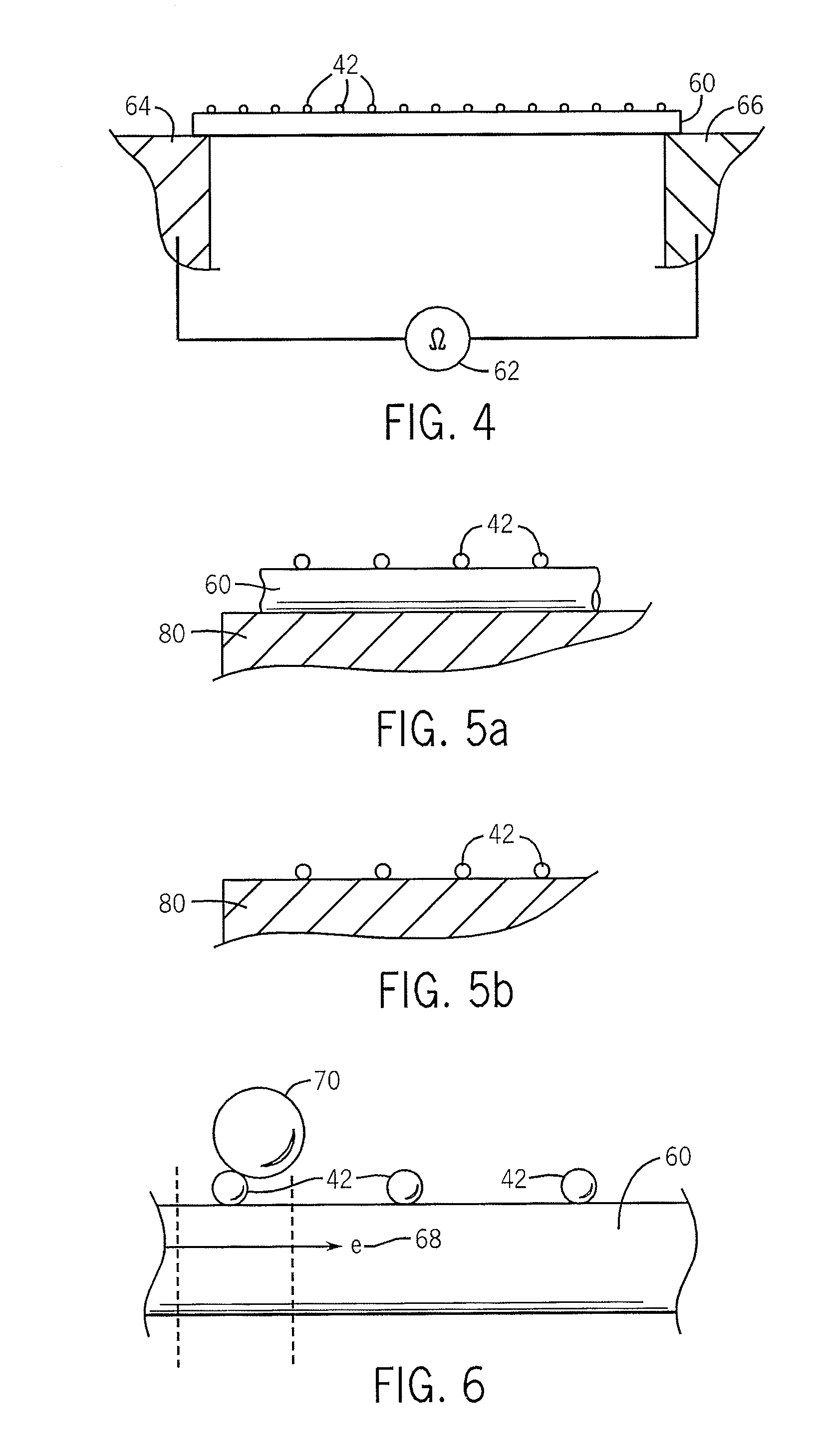Controlled decoration of carbon nanotubes with aerosol nanoparticles
- Summary
- Abstract
- Description
- Claims
- Application Information
AI Technical Summary
Benefits of technology
Problems solved by technology
Method used
Image
Examples
Embodiment Construction
[0032]Referring to FIG. 1, an electrostatic force directed assembly (ESFDA) device 10 provides an arc plasma source chamber 18 enclosing an arc cathode 14 opposed to an arc anode 20, the later holding a precursor material 22 from which nanoparticles will be created. A plasma arc voltage source 12 couples the arc anode 20 to the arc cathode 14 to create the arc 16 which strikes the precursor material 22 for the production of the nanoparticles 42. The arc cathode 14 and arc anode 20 may be, for example, tungsten and graphite respectively.
[0033]The application of the arc 16 to the precursor material 22 creates an aerosol of nanoparticles 42 through physical vaporization of the solid precursor material 22. This generation of nanoparticles creates a relatively broad size distribution of nanoparticles 42. A significant fraction of the nanoparticles 42 are charged by the arc 16 or through plasma or thermionic emission, which makes ESFDA feasible without the use of further nanoparticle 42 c...
PUM
 Login to View More
Login to View More Abstract
Description
Claims
Application Information
 Login to View More
Login to View More - R&D
- Intellectual Property
- Life Sciences
- Materials
- Tech Scout
- Unparalleled Data Quality
- Higher Quality Content
- 60% Fewer Hallucinations
Browse by: Latest US Patents, China's latest patents, Technical Efficacy Thesaurus, Application Domain, Technology Topic, Popular Technical Reports.
© 2025 PatSnap. All rights reserved.Legal|Privacy policy|Modern Slavery Act Transparency Statement|Sitemap|About US| Contact US: help@patsnap.com



